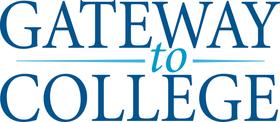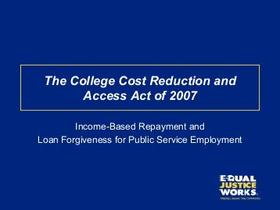- RCC has been the community's college of choice for nearly nine decades. The College offers 100+ programs leading to an associate's degree, career certificate or transfer to a four-year college or university. Each semester, more that 30,000 students take classes online or at one of RCC's campuses or education centers.
School Highlights
Riverside City College serves 28,081 students (20% of students are full-time).
The college's student-teacher ratio of 37:1 is higher than the state community college average of 32:1.
Minority enrollment is 86% of the student body (majority Hispanic), which is more than the state average of 77%.
Quick Facts (2025-26)
- Enrollment: 28,081 students
- In-state tuition: $1,426
- Out-state tuition: $7,366
- Student-teacher ratio: 37:1
- Minority enrollment: 86%
- Source: Integrated Postsecondary Education Data System (IPEDS)
Top Rankings
Riverside City College ranks among the top 20% of public schools in California for:
Category
Attribute
Community Size
Debt For Students
School Overview
The teacher population of 749 teachers has stayed relatively flat over five years.
Riverside City College
(CA) Community College Avg.
Carnegie Classification
Associate's Colleges: High Transfer-High Traditional
Baccalaureate/Associate's Colleges: Associate's Dominant
Institution Level
At least 2 but less than 4 years
At least 2 but less than 4 years
Institution Control
Public
Public
Total Faculty
749 staff
315 staff
School Calendar
Student Body
The student population of Riverside City College has grown by 32% over five years.
The student-teacher ratio of 37:1 has increased from 27:1 over five years.
The Riverside City College diversity score of 0.53 is less than the state average of 0.70. The school's diversity has declined by 8% over five years.
Total Enrollment
28,081 students
9,796 students
Student-Teacher Ratio
37:1
32:1
# Full-Time Students
5,603 students
1,259 students
# Part-Time Students
22,478 students
8,537 students
# Enrollment Undergraduate
280 students
242 students
# Full-Time Undergraduate Students
5,603 students
1,250 students
# Full-Time Graduate Students
n/a
63 students
# Part-Time Undergraduate Students
22,478 students
8,299 students
# Part-Time Graduate Students
n/a
10 students
Total Dormitory Capacity
n/a
121 students
% American Indian/Alaskan
n/a
n/a
% Asian
7%
13%
% Hispanic
65%
47%
% Black
8%
7%
% White
14%
23%
% Hawaiian
n/a
1%
% Two or more races
4%
5%
% Non Resident races
1%
1%
% Unknown races
1%
3%
Diversity Score
0.53
0.70
College Completion Rate (Students who graduate in less than 4 years)
33%
42%
College Completion Rate (Students who graduate in 4 years or more than 4 years)
n/a
43%
Average Graduate Earnings (10 Years)
$34,700
$34,700
Tuition and Acceptance Rate
The public in-state tuition of $1,426 is less than the state average of $1,516. The in-state tuition has stayed relatively flat over four years.
The public out-state tuition of $7,366 is more than the state average of $6,779. The out-state tuition has declined by 21% over four years.
In-State Tuition Fees
$1,426
$1,516
Out-State Tuition Fees
$7,366
$6,779
Tuition Notes
$1,380 per year
% Students Receiving Some Financial Aid
85%
85%
Median Debt for Graduates
$8,000
$10,500
Median Debt for Dropouts
$4,750
$6,239
Acceptance Rate
n/a
93%
Source: 2024 (or latest year available) Integrated Postsecondary Education Data System (IPEDS) , School Administrators
School Notes
- Riverside Community College has always been this community's college. One of the oldest two-year colleges in California. RCC traces its heritage back to 1916, to a time when Poly High School sat on what is now the Riverside City Campus. Located in the City of Riverside, the campus opened in 1916 on the site of the former Poly High School and today serves more than 19,000 students each semester. Students attending the City Campus can choose to earn an associate's degree, transfer to a four-year college or university or earn a career certificate that prepares them to enter the workforce. Thanks to strong programs in liberal arts and science, athletics, and performing arts, and home to the School for Nursing, RCC is one of California's leading community colleges and is a landmark in downtown Riverside. It is also home to the RCC Chancellor's Office and the Board of Trustees. Just as the Riverside City Campus is a focal point for education, athletic and performing arts activities, we believe that the RCC Alumni House will become a focal point for special alumni, college and community events. Reflected within the house are the heritage of Riverside, the Wood Streets, and RCC. Riverside Community College is a California public community college, fully accredited by the Western Association of Schools and Colleges.
Frequently Asked Questions
How much does Riverside City College cost?
Riverside City College's tuition is approximately $1,426 for In-State students and $7,366 for Out-State students.
What is Riverside City College's ranking?
Riverside City College ranks among the top 20% of community college in California for: Largest student body and Least debt for graduating students.
In what neighborhood is Riverside City College located?
Riverside City College is located in the Wood Streets neighborhood of Riverside, CA.
Recent Articles

Community College Success Rates 2025: Outcomes & Trends
Updated 2025 analysis of community college success rates, completion, transfer, costs, enrollment, and strategies that shape student outcomes.

Community Colleges in 2025: Combating Stereotypes with Impact
Updated insights on how community colleges are dispelling myths, growing enrollment, and expanding pathways in 2025.

2025 FAFSA Changes Explained for Community College Students
A comprehensive guide to 2025 FAFSA changes, what community college students must know, new eligibility rules, timelines, and tips to maximize federal aid.









